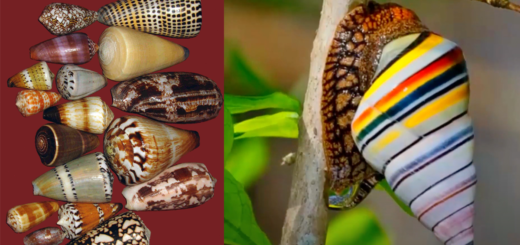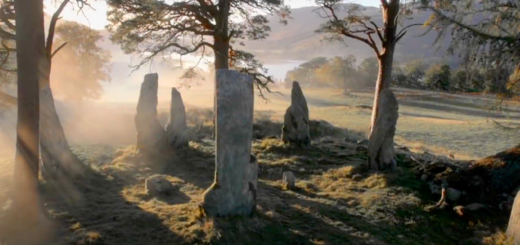New Species From ‘Treasure Island’ Reef Named ‘Pandemic Blenny’

The Pandemic Blenny is a newly described species named by ichthyologist Phil Hastings. The name is fitting because Hastings discovered the fish after he started working from home due to the COVID-19 pandemic.
Finding the Pandemic Blenny
In March 2020, the Scripps Institution of Oceanography’s campus in San Diego closed as the pandemic swept across the country. Knowing he would be working from home, Hastings realized he would have time for projects on the backburner.
So he took specimens from the Marine Vertebrate Collection, which he curated, home to see if he could identify any new species.
Hastings had plenty to study, including specimens on loan from the University of Costa Rica, the Smithsonian Institution, and the Los Angeles County Museum of Natural History. Incredibly, the Scripps collection by itself contains over two million specimens in 140,000 jars.
There are so many specimens that possibly, a new species could turn up. And, the scientist could stay safely at home.
New Species Found in Museums
Frequently, researchers find new species far away from their original homes. For example, a new species of stingray was recently found in the Vienna Natural History Museum’s collection.
Although originally from Yemen’s Arabian Peninsula, the stingray was in a glass jar, where it had remained for over a century. Interestingly, the newly-described Heins’ stingray was collected by a couple under house arrest in the coastal town of Qishn in 1902. Thus, they too had more time than usual for studying fish.
Who knows how many new species are waiting to be discovered? Until then, they may be sitting on a shelf in a museum.
Sometimes, new animal characteristics are discovered by looking at museum specimens. Recently, researchers discovered that some mammals like flying squirrels and platypuses glow under a blacklight. In part, museum collections provided evidence for the unexplained colorful flourescence.
Discovery of the Pandemic Blenny
Hastings found the new species inside one of the jars, which he dubbed the Pandemic Blenny or Coralliozetus clausus. Little wonder, the fish had remained undiscovered because it’s extremely tiny, the size of an aspirin pill. However, it’s as cute as can be, and he got the amazing chance to choose a name.
Perhaps, he would choose a name to indicate its miniature size?
“One of the pleasurable tasks of describing a new species is selecting a unique name for it. I originally thought about naming the fish in reference to its small size – the largest specimen is only 15 mm long,” said Hastings.
Then, Hastings decided the name should reflect the circumstances that led to the discovery.
“But then, when considering its restricted distribution, I decided to give it the Latin specific name of clausus, which means ‘enclosed’ or ‘having been shut off.’ As I stared at the four walls of my home office, I thought about my own and others’ isolation during the pandemic, so I gave it the common name of Pandemic Blenny.”
A Needle in a Haystack
The Pandemic Blenny is minuscule, with the largest reaching 15 millimeters (0.6 inches) in length. However, males may become sexually mature as small as 12.6 millimeters (0.5 inches.), notes Newsweek.
Finding such a small fish in the ocean would be difficult, particularly since the blenny is thought to live inside empty barnacles for protection. Plus, the blenny only lives near a remote island where few people are allowed to travel today.
So, finding the species would be like finding a needle in a haystack, where the haystack is the ocean.
These fish may only exist only near the isolated volcanic island of Cocos, 350 miles from Costa Rica. Cocos Island is considered one of the largest uninhabited Rain Forest islands in the world.
Thus, finding the Pandemic Blenny in the museum collection may have offered the best chance to discover it.
Little Fish, Big Eyes
Blennies are commonly kept in marine aquariums. For instance, Lawnmower Blennies scoot along the sand, eating algae as they comically perch on rockwork. Like the Pandemic Blenny, it has large, alert eyes that keep a close watch for predators.
In all, there are over 900 species of these fish found worldwide. However, the Pandemic Blenny is thought to be restricted to Cocos Island. Unlike many newly-described species, this fish lives near a national reserve. Therefore, it’s unlikely to face habitat loss due to human encroachment, which we see affecting most other species today.
“Thankfully, the protected status of Isla del Coco and the waters surrounding it bode well for the conservation of these small fishes found nowhere else in the world,” said Hastings.
On the other hand, climate change is affecting islands all over the world. In 2019, three islands disappeared as waters rose. By the end of the century, sea levels could rise by up to 6.5 feet, submerging small atoll islands. Although blennies live in the ocean, any changes to the reef could impact sea life.
According to the Scripps Institution of Oceanography, the island reef is home to twelve endemic cryptobenthic fish found nowhere else. That list includes:
- Gobies
- Clingfishes
- The Cocos Barnacle Blenny (Acanthemblemaria atrata), described by Hastings and Ross Robertson in 1999.
See a Cocos Barnacle Blenny filmed in 2013 by Bibian Wong below:
The Famed ‘Treasure Island’
The lush Cocos Island in the Pacific inspired the island in the movie “Jurassic Park.” The island, which was once a hideout for pirates, was the inspiration for Robert Louis Stevenson’s classic novel “Treasure Island.” Notably, the Galápagos Islands are the nearest neighbor, a few hundred miles southwest.
In 1994, famed explorer Jacques Cousteau called Cocos “the most beautiful island in the world.”
Cocos Island is home to endemic birds, the Cocos Cuckoo, Flycatcher, and Finch. Nearby on Galápagos, a finch described by Darwin is a related bird. Also, the island is home to two endemic lizard species and almost a hundred insects.
Lore suggests that pirate and buccaneer treasure could remain there, but today, the government only authorizes Costa Rican park rangers to stay on the island. Thus, it’s good news for natural treasures, the Pandemic Blenny, the reef, and tropical life.
See more from Free High-Quality Documentaries:







